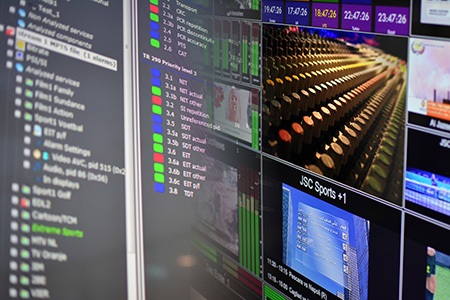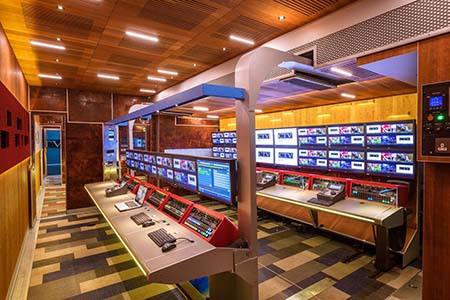Axon has introduced a new licence-based logging and monitoring option for TRACS. The loudness licence will enable monitoring and logging of loudness measurements of all audio channels on TRACS recorders (also existing installations) without additional hardware requirements. During the real-time encoding process, before audio compression, all relevant audio loudness levels (up to eight stereo pairs) […]

Axon has introduced a new licence-based logging and monitoring option for TRACS. The loudness licence will enable monitoring and logging of loudness measurements of all audio channels on TRACS recorders (also existing installations) without additional hardware requirements.
During the real-time encoding process, before audio compression, all relevant audio loudness levels (up to eight stereo pairs) are measured and driven by the Emsytech Hummingbird loudness meters. These measurements are stored in the MPEG stream, for synchronised loudness monitoring, and in separate loudness data files for easy (automated) detection and retrieval.
The most relevant measurements are:
JJMomentary (M) loudness measurements (not gated), calculated over 400 milliseconds.
JJShortterm (S) loudness measurements (not gated), calculated over three seconds. Very useful to monitor immediate trends of loudness in the audio
JJIntegrated (I) loudness measurements, calculated over an indefinite period of time, including any gate threshold. This is a standardised average value of all audio measurements over an x-amount of time.
During recording I are continuously measured over an hour. During playback the duration of I can be made to match, for instance, the length of a programme or commercial.
The loudness of an audio file can easily be monitored in the loudness tab during playback or liveplay. The measurements are visuallised as actual values of M, S and I (hourly) and as audio bars. The scale of these audio bars is user-definable.
The actual values and audio bars in the loudness tab, positioned next to the video player, are in synch with the video and audio that is being played. This makes it possible to determine exactly what content caused loudness peaks.
The course of the loudness levels during a user-defined period of time can be shown in a loudness history graph. This graph not only shows M, S and I (hourly) graphs, but also shows a calculated integrated loudness level over a user-defined period.
Besides monitoring and logging, the TRACS loudness option also makes your compliance recorder function as an integrity checker for your loudness levels. Loudness violations can be reported by means of e-mails or via SNMP status as well as visual status in the client. The violation level and threshold are user definable as well as on which measurement (M, S or I hourly) you want to perform the violation detection.








































































